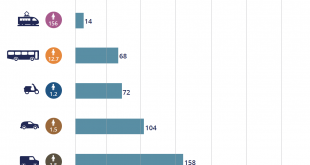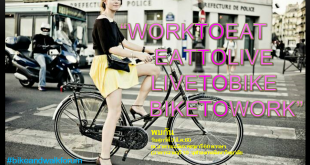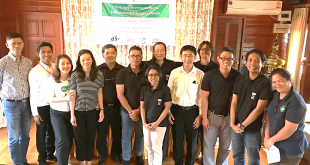On Saturday 22nd December 2012 at Office of the Credit Union League of Thailand in Bangkok, Thailand Cycling Club (TCC) together with Opportunity Foundation organized a meeting of representatives from urban communities in Bangkok to brainstorm their ideas about walking and cycling in daily activities to be proposed to candidates in the gubernatorial election of Bangkok Metropolitan Administration (BMA) to take place in February 2013.
So far some forms of such brainstorming activities did took place, mostly through the Social Media and in some bicycle events. However, ideas mostly came from ‘cyclists’ or those cycling for recreation, exercise or racing, not cycle users in daily activities., and ideas were restricted to issues about cycling, not including walking which is closely associated with cycling as basic forms of non-motorised transport.
 |
 |
This brainstorming was participated by more than 60 representatives (mostly members of community committee) from 31 communities in 20 districts of Bangkok with a total population of about 25,000, and also representatives from communities in Pathum Thani and Ubon Ratchathani Province who would bring back ideas to present to their local administrative organizations.
After opening and explanation of objectives by Professor Emeritus Thongchai Panswad, TCC Chairperson, the participants were divided into three groups for Eastern Bangkok, Central Bangkok and Western Bangkok (Thonburi Side) to brainstorm and later present to the plenary. They began with discussion on current situation, including problems and obstacles they were facing while walking and cycling in daily activities in Bangkok, and came up with their proposals to election candidates and later the newly elected Bangkok Governor.
To begin with, they proposed that both the candidates and elected governor must integrate walking and cycling into their election policy to be presented to voters, the citizens of Bangkok. Then when the new governor is going to take any actions related to walking and cycling, communities need to be consulted. The governor must issue direct and immediate order to responsible unit to take actions for anything that is urgent and must visit the area too. They believe that if BMA really want people to walk and cycle more in daily activities, there must be footpaths and cycle paths/lanes that are really convenient and safe.
Concerning walking, a main problem that all communities similarly highlighted was that BMA allowed street traders to occupy space on footpaths to an extent that walkers could not use it conveniently. In many areas, walkers needed to go down to walk on road, risking themselves against motorized vehicles. If Bangkok Governor decided to allow traders to use footpaths, an order must be made, putting traders on one side to give ample space for walkers or bicycle users to travel conveniently. Motorcycles must be strictly forbidden from using footpaths. Footpaths must also be well maintained, keeping them smooth; trees are planted to provide shade, and sufficient light is provided at night time.
Concerning cycling, the best option is to have cycle paths segregated from roads used by motorized vehicles. A cycle path should be at least three feet wide. To begin with, cycle paths should be constructed where local people often use to travel over short distance to do their daily activities, such as going to market, government office, bank or public park, for example. The participants also talked a lot that Bangkok Governor should support pupils to cycle to school. Apart from creating safe cycle paths for pupils, there should be campaign and fund to support them. They should be taught to be able to do simple cycle repair work as well.
 |
 |
The community representatives proposed that Bangkok Governor creates pilot ‘model cycle paths’ in ten districts first. Certain roads were clearly mentioned: Ramkhamhaeng, Rama 9, Rama 4 and Moo Baan Nak Keelar (Athlete Village). New roads to be constructed in Bangkok Metropolitan should all have cycle paths. Only when short cycle paths around urban communities are working well, they could be connected to create city-wide cycle path network. Moreover, when any cycle path is in place, public relations must be done to make communities nearby aware about and use it.
Apart from having cycle paths that are convenient and safe, there must be safe cycle parking places as well at key locations, including train stations, department stores and government offices, for example. Shower facilities should also be provided if possible. There should be smooth slope on bridges crossing canals and pedestrian bridges, so that cycle users can use them like walkers. Cycle repair and maintenance centers should be available all over the city. Cycle paths for exercise should be constructed in all public parks. The BMA (and the government) should have a fund to support cycling and a project to support those who buy first cycle should be initiated similar to a project to support first car buyers. Every urban community should be given some free cycles to stimulate uses of cycle. Transport law should be newly enacted or amended to provide special protection to walkers and cycle users, requiring heavy penalties to drivers of motorized vehicles who harm walkers or cycle users. Cycle users should have cycle license. The police should have patrol cycles. Last but not least, authorities responsible for rail systems should provide cycle rental service at their train stations.
To make these proposals serious, the community representatives also proposed that election candidates should be invited to present their policies and listen to views from urban communities and a cycle parade should be organized to vist offices of political parties that put candidate up for election. In addition, they commonly agreed that communities should not only demand actions from the elected governor, but also take actions themselves as well. The representatives or community committee need to campaign encouraging more of their fellow community members to cycle. A cycling club should be established in each community to promote cycling and create more bargaining power. These clubs can be local branches of TCC. Each community must make promotion of walking and cycling an integrated part of community development work, both within the community and in working with government agencies. Communities that have already registered with a BMA’s district office would have a monthly meeting with the district office. This meeting should be used as an opportunity to advocate walking and cycling formally with local administrative organizations. Finally, the community representatives agreed to set up a community network to promote walking and cycling; committee of the network should consist of representatives from communities taking part in this meeting to begin with.
 |
 |
 |
 |
 |
 |
Reported by Gawin Chutima
25 December 2012
 ชมรมจักรยานเพื่อสุขภาพแห่งประเทศไทย ชมรมจักรยานเพื่อสุขภาพแห่งประเทศไทย
ชมรมจักรยานเพื่อสุขภาพแห่งประเทศไทย ชมรมจักรยานเพื่อสุขภาพแห่งประเทศไทย



